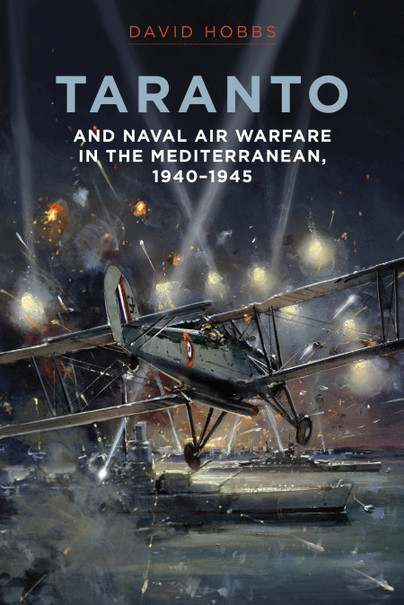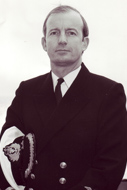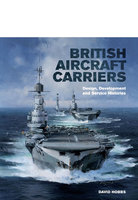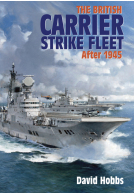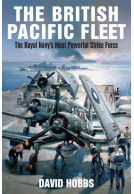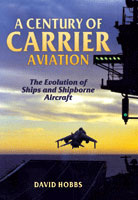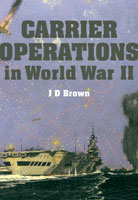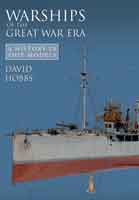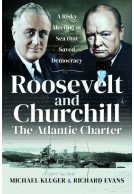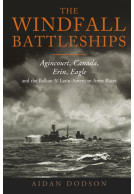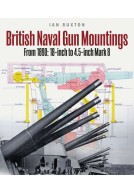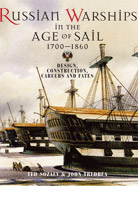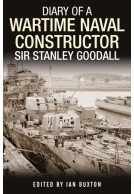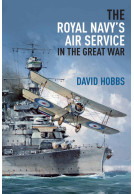Taranto (Hardback)
And Naval Air Warfare in the Mediterranean, 1940–1945

Pages: 456
Illustrations: 240 b/w photos and 6 maps
ISBN: 9781526793836
Published: 10th December 2020
(click here for international delivery rates)
Need a currency converter? Check XE.com for live rates
This is the first book to focus on the Fleet Air Arm's contribution to naval operations in the Mediterranean after the Italian declaration of war in June 1940. The Royal Navy found itself facing a larger and better-equipped Italian surface fleet, large Italian and German air forces equipped with modern aircraft and both Italian and German submarines. Its own aircraft were a critical element of an unprecedented fight on, over and under the sea surface.
The best-known action was the crippling of the Italian fleet at Taranto, which demonstrated how aircraft carriers and their aircraft had replaced the dominance of battleships, but every subsequent operation is covered from the perspective of naval aviation. Some of these, like Matapan or the defence of the ‘Pedestal’ convoy to Malta, are famous but others in support of land campaigns and in the Aegean after the Italian surrender are less well recorded. In all these, the ingenuity and innovation of the Fleet Air Arm shines through – Taranto pointed the way to what the Japanese would achieve at Pearl Harbor, while air cover for the Salerno landings demonstrated the effectiveness of carrier-borne fighters in amphibious operations, a tactic adopted by the US Navy.
The author's years of archival research together with his experience as a carrier pilot allow him to describe and analyse the operations of naval aircraft in the Mediterranean with unprecedented authority. This provides the book with novel insights into many familiar facets of the Mediterranean war while for the first time doing full justice to the Fleet Air Arm’s lesser known achievements.
David Hobbs provides a most valuable account and analysis of the contribution of carrier airpower to victory against Germany and Italy in the Second World War, and its enduring relevance and value.
Naval Review
Read the Full Review Here
David Hobbs is a man on a mission. After a career in the Royal Navy and a decade serving as the curator of the Fleet Air Arm (FAA) Museum at RNAS Yeovilton, he has dedicated himself to chronicling the history of British naval air operations in a series of works.
The Northern Mariner, Winter 2021
Hobbs’ latest volume represents a continuation of this effort, focusing on FAA’s role in the Mediterranean theatre during the conflict. Readers of his previous books will find much that is familiar in it, as he provides another detailed operational history supplemented with a considerable selection of photographs, most of which are from the author’s personal collection. Just as familiar is his admiration for the men who served in the FAA, as well as his lament for the opportunities lost because of prewar decisions that handicapped the senior service’s aeronautical capabilities.
It is this empathy for the men of the FAA which is the real hallmark of Hobbs’ work. His book is as much a tribute to them as it is a history of FAA activities in the Mediterranean. This compliments rather than detracts from his coverage of British naval air operations, as it provides the emotion underlying his solid and well-researched study. Not only has Hobbs advanced his efforts to chronicle the history of the Royal Navy’s air arm one step closer to completion, he has provided an essential work for anyone interested in the naval air war in the Mediterranean and naval operations in the theatre more generally.
The naval history of the Mediterranean theatre in the Second World War is a subject that only a few book have tried to tackle in the past. David Hobbs is a renowned naval aviation author and this recent volume on such a strategic area of operations is one of the most comprehensive and well researched books on this subject. Famous battles such as the raid on Taranto, the Battle of Matapan, the multi year saga of Malta, Operation TORCH, the invasions of Sicily and Italy, and Operation DRAGOON are all covered in fine detail along with other lesser known actions up until the final carrier operations in 1945. The author’s extensive career in naval aviation flying many types of aircraft and his later occupation of curator of the Fleet AIr Arm Museum have prepared him for this mammoth undertaking and I’m happy to say he has very much succeeded in telling this incredible history with the honour and meticulous research it deserves.
Todd Shugart - Aviation News
The book is divided into fourteen chapters beginning with early operations in 1940 and finishing with the final series of carrier operations in the Mediterranean. There are so many details and stories in this book that it would be near impossible for this reviewer to give you the reader an idea of how engrossing a read this book is. There are individual aircrew stories, operational and strategic discussions on various fleet movements and daily records of air raid interceptions, FAA bombing missions, and aircraft losses while also detailing the many attacks on German, Vichy French, and Italian warships, cargo vessels, and aircraft. The well known raid on Taranto by Fairey Swordfish torpedo bombers is you would expect covered in amazing detail. It also is the subject of the painting for the cover of the book. This audacious raid by fabric covered biplanes against a well defended Italian battle fleet in harbour is legendary and still celebrated in Royal Navy messes and wardrooms around the world. There are accounts from Fairey Albacore aircrew, Grumman Martlets, Supermarine Seafires, and Fairey Fulmars just to name a few. The heroic actions of the FAA crews are captured in the chapter on the Battle of Matapan early on and later the support to amphibious operations on Sicily and Salerno are examples of the evolution in Royal Navy carrier operations in the Mediterranean. Lesser known operations off the islands of Greece such as Leros and Kos are covered later in the war. The final operations are a particular section that has not garnered much attention in previous books but this is now brilliantly covered by David Hobbs.
This book is lavishly illustrated with hundreds of well chosen and captioned photographs that really complement the text well. There is at least one relevant picture on every or every other page. A helpful glossary is placed near the beginning of the book. There are six appendices covering topics such as types of aircraft employed by the Fleet Air Arm, Royal Navy fighter weapons, and aircraft carrier flight deck, hangar, and lift statistics. There is a notes section, a very extensive bibliography, and an index at the end. I have to admit as a reviewer I could literally find no fault in editing or in the book altogether. This is a book that all naval aviation historians, Royal Navy historians, and anyone with an interest in Fleet Air Arm operations in the Mediterranean needs to have in their collection. This is an outstanding tribute to the Fleet Air Arm and Royal Navy veterans who served in the Mediterranean Sea during the Second World War. I highly recommend it and I’m looking forward to reading his latest work entitled The Fleet Air Arm and the War in the Europe, 1939-1945.
Featured in
The Magazine of the Battlefields Trust and the Scottish Battlefields Trust - Battlefield, Vol 26, Autumn 21
"David Hobbs spent thirty years in the Royal Navy, flying a variety of aircraft and retiring in the rank of Commander. He became curator at the Fleet Air Arm museum. So he is highly qualified for this task... As in the rest of the book, interesting and vivid photographs are presented with informative captions... a good book."
Geoff Simpson
Featured in
Journal of the RAF Historical Society
Taranto is an excellent addition to the series of books Hobbs has written involving Royal Navy aviation operations. For those whose interests lie in history or wargaming, especially those interested in World War II naval aviation, this book is worth reading.
Nautical Research Journal
This book’s main title is ‘Taranto’ but it is about so much more than that singular action. The whole range of Fleet Air Arm activity in the Mediterranean theatre, 1940-1945, is the real content and a full and fascinating story it is. There are many insights into little known activities especially those where shore based squadrons were supporting the RAF and the troops on the ground in the North African campaign. Readers can expect to have their eyes opened to the real value of the ‘antiquated flying string bag’ the Fairey Swordfish. Although superseded by fast single seater fighters there was always a niche which no other aircraft could fill and consequently they stayed in service for the whole period. An underlying message of the book is that during this period the battleship became obsolete to be replaced by the aircraft carrier. The author draws attention to the political difficulties in the Admiralty, the RAF and the aircraft supply chain which accounted for the necessity of eventually obtaining, by purchase or Lean Lease, American aircraft and American carriers.
Clash of Steel
Technical detail, personal stories and lots of photographs make this a must have book for readers with many different interests. A jolly good read which we highly recommend.
Read the full review here
David Hobbs has provided a meticulously researched and expertly told operational history of the FAA in the Mediterranean. Highly recommended as a major contribution to overall air power history.
Tim Coyle, Australian Naval Institute
Read the full review here
This well-researched and profusely illustrated book really is the definitive history of the FAA’s Mediterranean operations in the Second World War and is highly recommended.
World Ship Society - Warships, May 2021
If you want a book regarding the Royal Navy's Mediterranean war then I can thoroughly recommend this one as it goes into great depth, about the men, their ships, their crews and the aircraft plus the remarkable the courage to operate in such a hostile environment.
Army Rumour Service (ARRSE)
Read the full review here
There can be few better qualified to write this definitive and riveting account of what, in essence, was the coming of age of the Fleet Air Arm and Carrier operations, than Commander David Hobbs, a retired Naval Aviator, past Curator of the world renowned Fleet Air Arm Museum and now professional Naval historian. Based on extensive research May bulletin 169-224.qxp_Layout 1 25/04/2021 09:43 Page 54223 over many years, the author provides a very clear summary of the higher level command and organisation of the Royal Navy on the outbreak of War, with specific reference to the early development and state of the Fleet Air Arm which sets the context for the book. He goes on to give exceptionally clear summaries of the strategic importance of operations against the Vichy French and Italian Fleets in the Mediterranean from 1940 onwards and detailed, exceptionally clear accounts of the Taranto strike in November 1940, of the subsequent Battle of Matapan and Operations Torch and Dragoon and support to other operations in North Africa, Greece, Crete, Sicily and Malta, including the Pedestal Convoy. Concurrently he explains the development of fighter direction and strike tactics, including the use of air launched torpedoes at night against ships in harbour and at sea. The achievements of the Fleet Air Arm are all the more remarkable because throughout the early part of the Campaign in the Mediterranean their aircraft were outmatched and outnumbered, yet their performance contributed significantly to the outcome of the Campaigns in North Africa and Italy. The text is profusely illustrated with photographs, many published for the first time, and supported by detailed Appendices which include details of aircraft and weapon types and various statistics and comprehensive end notes. If you only read one book on the development of the Fleet Air Arm and Naval air warfare in the Mediterranean during World War 2 then this should be it. Most highly recommended.
Military Historical Society
There has been a number of worthy books broadly covering this topic, including the vivid recollections of participants from admiral to aircrew, but none so comprehensive, detailed and authoritative as this. It is quite simply the definitive text, a book of reference, the closest a person could get to the subject matter short of examining the primary sources. The writer is not only a painstakingly thorough and scrupulous academic historian but a fluent wordsmith capable of conveying the drama and momentum of events and the experiences of its participants. The book is, therefore, very highly recommended.
Mariners Mirror
This is a fantastic book looking at the Fleet Air Arm contribution in the Mediterranean and is a similar book to those you get that become the bible on one subject. This is a very thorough book in the telling and the information is very detailed and informative. The book reads very well indeed and doesn’t feel heavy at all. The book also covers subjects such as Operation Judgement, Matapan, the Pedestal Convoy and Operation Torch. I think that what also must be said is, along with the very high standard of writing and detail is the superb number of high-quality pictures and photographs featured in the book. They really do pop and standout. The fascinating part of the book really is the growth and early use of the Fleet Air Arm and seeing its progression, but the best bit has to be the courage and bravery of the men/pilots that carried out the fighting and flying. I really enjoyed the notes and the appendices at the back of the book, which I highly recommend. A definite 5-star rating from me.
UK Historian
Read the full review here
This book is a fine tribute to the carrier operations and the predominantly RNVR aircrew in the Med. This book is packed with detail, accompanied by a vast array of some fascinating photos, many from the author’s own collection; this really is the definitive history of FAA operations in the Mediterranean.
Warship World
This book has a pacier narrative, interspersed with a really useful analysis of the Fleet Air Arm challenges and personal stories. It is profusely illustrated with period photographs that are relevant to the text. It is an excellent read.
Balkan Wargamer
Read the full review here
If you only read one book on the development of the Fleet Air Arm and Naval air warfare in the Mediterranean during World War 2 then this should be it. Very highly recommended.
Military Historical Society
About David Hobbs
DAVID HOBBS, after serving in the Royal Navy as a pilot for thirty-three years became the Curator of the Fleet Air Arm Museum for a further eight. Since then he has established himself as an authoritative writer and lecturer on naval aviation topics in the UK, Australia, France and the USA and has more than twenty highly regarded books to his name. The most recent of these was The Fleet Air Arm and the War in Europe 1939-1945 published by Seaforth in 2022.







